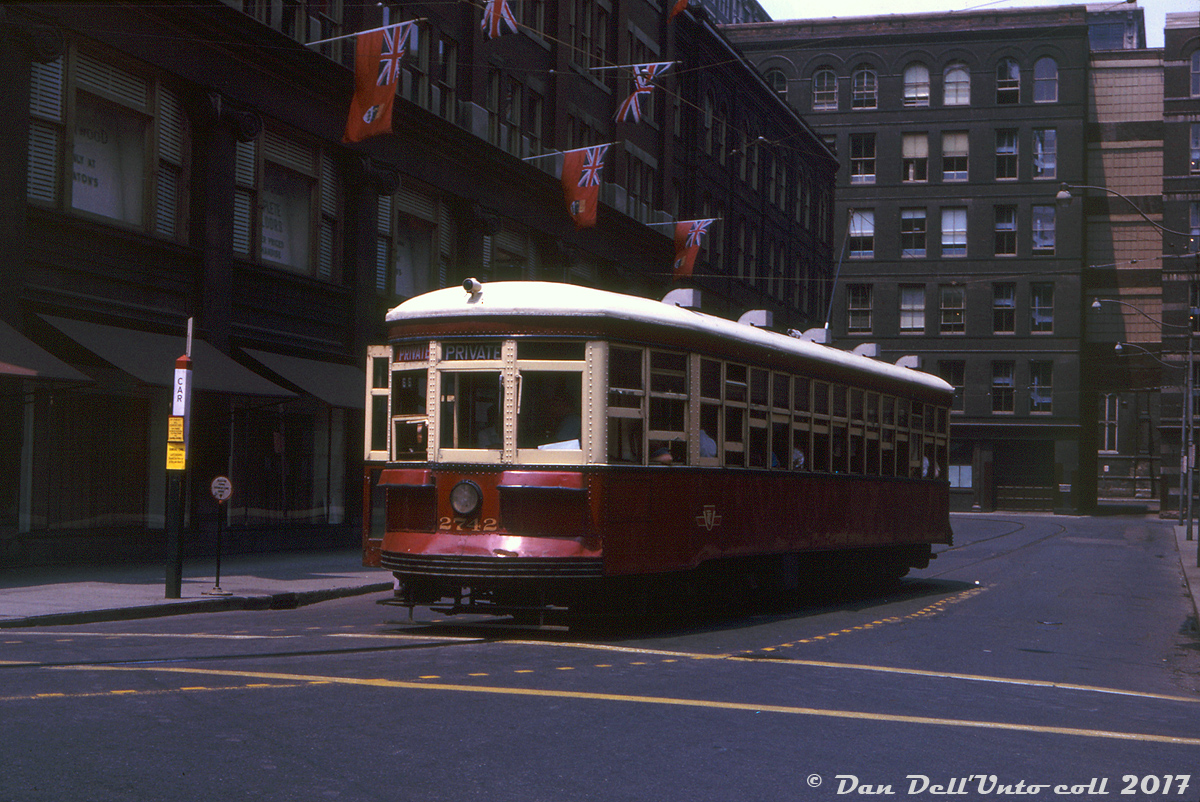|
Caption: In the Shadow of Giants: TTC Peter Witt streetcar 2742 operates on a Private trip, turning at "City Hall Loop" in 1963, which consisted of track looping from Bay onto streets Louisa, James and Albert. The early-mid 1960's spelled the end of the already decimated Peter Witt streetcars in regular service on the TTC, due to the opening of the University subway line. Fantrips by enthusiasts and railway societies were common, often times chartering multiple cars.
Car 2742 is shown here turning south off James St. to west on Albert St., amidst the towering department store, warehouse and manufacturing buildings of the T. Eaton Co., no doubt decked out to the 9's for Dominion Day on July 1st (Canada Day) in typical Eatons fashion. A Canadian icon and retailing powerhouse, Eatons had in the works at the time plans to buy up and redevelop this whole area into a new Eaton's development, replacing the Queen Street store, all of its old manufacturing, retail and warehousing buildings in this block, and even Trinity Church (visible between buildings on the right) and Toronto's Old City Hall with a new modern department store, office towers, a hotel and the works. City and residential opposition quashed the plan after several years and nothing became of it. Eaton's later came back to the table in the 70's with a new proposal, that eventually became the modern-day Eaton Centre. The streetcar tracks here, the old towering buildings surrounding them, and a number of small side streets were casualties of the new development, and eventually changing times and a failure to "mind the store" would catch up with Eatons in the end. Like the Peter Witt cars that were once so common - here today, gone tomorrow.
F.H.Worsfold photo, Kodachrome from the Dan Dell'Unto collection.
|



I really enjoy seeing these older streetcar images. Fascinating to see how Toronto has changed. Great narrative! Thank you for posting.
What a glimpse into history this photo is!
Thanks guys, I’ve been collecting slides for a few years now and figured sharing some of the oldies with information to match would be a neat historical project. Of course, much thanks goes to the photographers who were there to capture a lot of this (some of whom are unfortunately no longer with us).